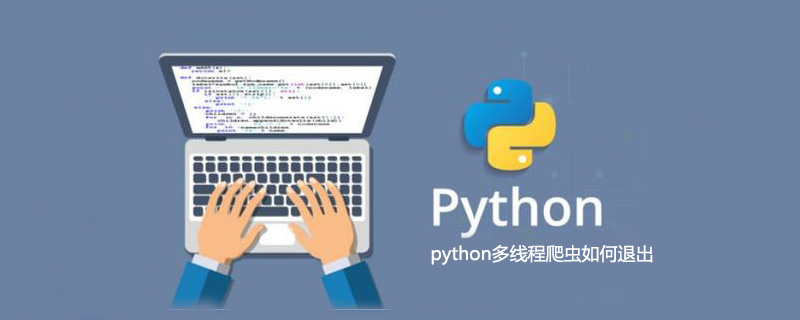
解决方案 · 壹
一个比较nice的方式就是每个线程都带一个退出请求标志,在线程里面间隔一定的时间来检查一次,看是不是该自己离开了!
import threading class StoppableThread(threading.Thread): """Thread class with a stop() method. The thread itself has to check regularly for the stopped() condition.""" def __init__(self): super(StoppableThread, self).__init__() self._stop_event = threading.Event() def stop(self): self._stop_event.set() def stopped(self): return self._stop_event.is_set()
在这部分代码所示,当你想要退出线程的时候你应当显示调用stop()函数,并且使用join()函数来等待线程合适地退出。线程应当周期性地检测停止标志。
然而,还有一些使用场景中你真的需要kill掉一个线程:比如,当你封装了一个外部库,但是这个外部库在长时间调用,因此你想中断这个过程。
解决方案 · 貳
接下来的方案是允许在python线程里面raise一个Exception(当然是有一些限制的)。
def _async_raise(tid, exctype):
'''Raises an exception in the threads with id tid'''
if not inspect.isclass(exctype):
raise TypeError("Only types can be raised (not instances)")
res = ctypes.pythonapi.PyThreadState_SetAsyncExc(tid,
ctypes.py_object(exctype))
if res == 0:
raise ValueError("invalid thread id")
elif res != 1:
# "if it returns a number greater than one, you're in trouble,
# and you should call it again with exc=NULL to revert the effect"
ctypes.pythonapi.PyThreadState_SetAsyncExc(tid, 0)
raise SystemError("PyThreadState_SetAsyncExc failed")
class ThreadWithExc(threading.Thread):
'''A thread class that supports raising exception in the thread from
another thread.
'''
def _get_my_tid(self):
"""determines this (self's) thread id
CAREFUL : this function is executed in the context of the caller
thread, to get the identity of the thread represented by this
instance.
"""
if not self.isAlive():
raise threading.ThreadError("the thread is not active")
# do we have it cached?
if hasattr(self, "_thread_id"):
return self._thread_id
# no, look for it in the _active dict
for tid, tobj in threading._active.items():
if tobj is self:
self._thread_id = tid
return tid
# TODO: in python 2.6, there's a simpler way to do : self.ident
raise AssertionError("could not determine the thread's id")
def raiseExc(self, exctype):
"""Raises the given exception type in the context of this thread.
If the thread is busy in a system call (time.sleep(),
socket.accept(), ...), the exception is simply ignored.
If you are sure that your exception should terminate the thread,
one way to ensure that it works is:
t = ThreadWithExc( ... )
...
t.raiseExc( SomeException )
while t.isAlive():
time.sleep( 0.1 )
t.raiseExc( SomeException )
If the exception is to be caught by the thread, you need a way to
check that your thread has caught it.
CAREFUL : this function is executed in the context of the
caller thread, to raise an excpetion in the context of the
thread represented by this instance.
"""
_async_raise( self._get_my_tid(), exctype )
正如注释里面描述,这不是啥“灵丹妙药”,因为,假如线程在python解释器之外busy,这样子的话终端异常就抓不到啦~
这个代码的合理使用方式是:让线程抓住一个特定的异常然后执行清理操作。这样的话你就能终端一个任务并能合适地进行清除。
解决方案 · 叁
假如我们要做个啥事情,类似于中断的方式,那么我们就可以用thread.join方式。
join的原理就是依次检验线程池中的线程是否结束,没有结束就阻塞直到线程结束,如果结束则跳转执行下一个线程的join函数。
先看看这个:
1. 阻塞主进程,专注于执行多线程中的程序。
2. 多线程多join的情况下,依次执行各线程的join方法,前头一个结束了才能执行后面一个。
3. 无参数,则等待到该线程结束,才开始执行下一个线程的join。
4. 参数timeout为线程的阻塞时间,如 timeout=2 就是罩着这个线程2s 以后,就不管他了,继续执行下面的代码。
# coding: utf-8
# 多线程join
import threading, time
def doWaiting1():
print 'start waiting1: ' + time.strftime('%H:%M:%S') + "\n"
time.sleep(3)
print 'stop waiting1: ' + time.strftime('%H:%M:%S') + "\n"
def doWaiting2():
print 'start waiting2: ' + time.strftime('%H:%M:%S') + "\n"
time.sleep(8)
print 'stop waiting2: ', time.strftime('%H:%M:%S') + "\n"
tsk = []
thread1 = threading.Thread(target = doWaiting1)
thread1.start()
tsk.append(thread1)
thread2 = threading.Thread(target = doWaiting2)
thread2.start()
tsk.append(thread2)
print 'start join: ' + time.strftime('%H:%M:%S') + "\n"
for tt in tsk:
tt.join()
print 'end join: ' + time.strftime('%H:%M:%S') + "\n"
默认join方式,也就是不带参,阻塞模式,只有子线程运行完才运行其他的。
1、 两个线程在同一时间开启,join 函数执行。
2、waiting1 线程执行(等待)了3s 以后,结束。
3、waiting2 线程执行(等待)了8s 以后,运行结束。
4、join 函数(返回到了主进程)执行结束。
这里是默认的join方式,是在线程已经开始跑了之后,然后再join的,注意这点,join之后主线程就必须等子线程结束才会返回主线。
join的参数,也就是timeout参数,改为2,即join(2),那么结果就是如下了:
两个线程在同一时间开启,join 函数执行。
wating1 线程在执行(等待)了三秒以后,完成。
join 退出(两个2s,一共4s,36-32=4,无误)。
waiting2 线程由于没有在 join 规定的等待时间内(4s)完成,所以自己在后面执行完成。
神龙|纯净稳定代理IP免费测试>>>>>>>>天启|企业级代理IP免费测试>>>>>>>>IPIPGO|全球住宅代理IP免费测试





